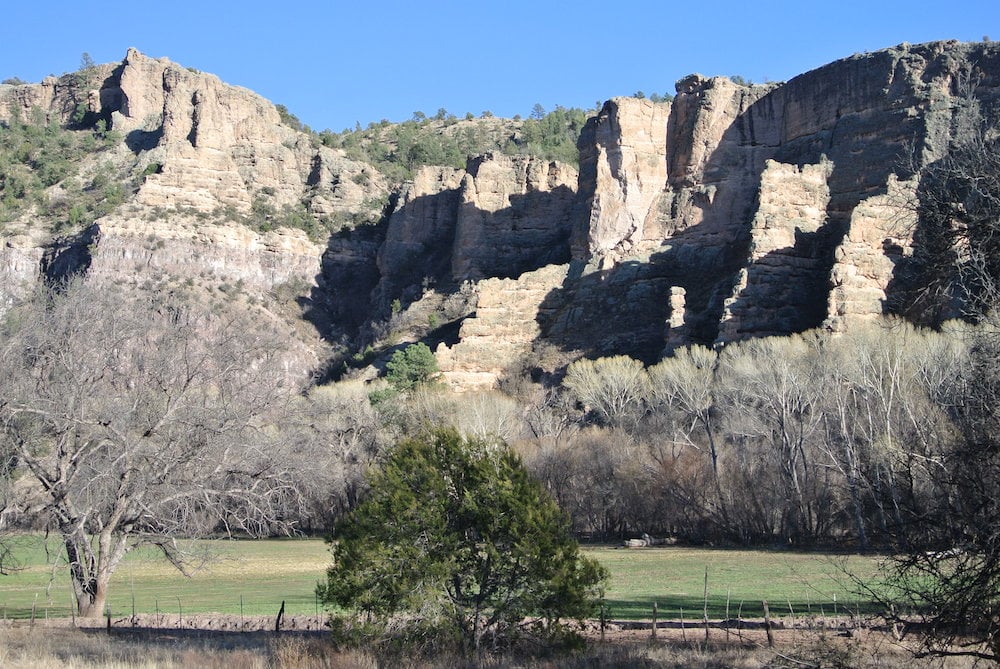
My favorite quote from Writing Wild is one Tina Welling borrows from Jesus, of all people: “If you bring forth what is within you, what is within you will save you.” This comes from the non-canonical Gospel of Thomas, which was considered too New Age in its day, and promptly buried. Likewise, with its touchy-feely Spirit Walks, Writing Wild has a whiff of New Age about it, but should by no means be buried. Taken with the right pragmatic attitude, the walks are touchy-feely in the best possible way. As Welling says, “We create a relationship with nature the same way we create a relationship with a person. We spend time in their presence.” By the end of the book, I felt her wisdom was not just constructive for writers, but for anyone who seeks a more deliberate relationship with the natural world.
When using all the senses to name, describe, and interact with the world — conscious acts designed to encourage readers to go beyond surface impressions — it is possible, as Welling puts it, to become fully awake on the planet. It is not unlike journaling, which I did for many years in a journal group (yes, I know, as New Age as it gets, but that was then and this is now). The theory behind journaling is that it doesn’t much matter what the writing prompt is, because what is currently going on inside will find a way out through the words. Free associative writing — which is done for a timed period without lifting pen from paper, and without crossing out or making corrections — will eventually sneak past the inner censor and reveal one’s themes, so to speak. The same for Welling’s walks, which go somewhat like this: One: venture out into nature; Two: focus on one object or scene, listing its characteristics; then, Three: write about the personal meaning those characteristics have for you. The results might reveal buried or unresolved conflicts, or simply tap interesting memories and psychological information.

This is the raw material with which writers mold their work. but as in journaling, finding personal meaning in the world around you seems a useful tool for everyone. My journal group (of whom there were only a couple of members who considered themselves writers) met monthly in rotating homes, and in late May we would gather at Babette’s house by the quarry. Our ‘prompt’ for the evening was a walk through the woods where lasciviously pink Lady Slippers were in bloom. Every year, we’d laugh at the flowers’ resemblance to deeply-veined scrotums, then we’d go back to her house and write. In reading our work out loud to one another, the unworldly Lady Slippers never failed to stir up fervent, often emotionally complicated responses. Then last year, on the heels of Lady Slipper season, a year after her husband’s death, Babette took her own life. No one knows what to make of it. I tell myself a story of grief, love, and Lady Slippers.

There, you see. I begin writing about one thing, and I am led away with the mere mention of a Lady Slipper. My unresolved sadness and confusion is still dangerously close to the surface, and bubbles up with the written word. Nature bleeds with meaning such as this.
Welling believes we can interpret the world in the same way we might interpret a dream, in that the outer world often reflects our inner condition if we open ourselves to the possibility. When a deer crosses our path in our sleep, we wake up and wonder what it could mean, often contemplating what is going on in our lives and who or what the deer might represent. When a deer crosses our path in real life, why not ask the same questions? It can lead to unexplored territory. To the wildness inside.

Here is one of Welling’s exercises to steer you in that direction: Take a deep breath, close your eyes, open your eyes, then make a quick list of everything that catches your attention using all five senses. Then do a brief interpretation of the list. What is the tone? Negative? Positive? What images are symbols for you? How might the list inform a question you have about your life today? Go where it leads you, and watch out for the inner censor. “Eventually,” says Welling, “the wildness outside leads to the wildness within, that place that gives space and reflects truth and accepts everything.”

Accepting everything might be too grand a goal for any exercise, but making space for wildness, there’s something worth walking for, New Age or not.
JoeAnn Hart writes about the pervasive and widespread effects of the climate crisis on the natural world and the human psyche. Her most recent book, Arroyo Circle, a story of reclamation in a time of loss, was released by Green Writers Press in 2024. Her other books include the prize-winning environmental and animal fiction collection Highwire Act & Other Tales of Survival, the crime memoir Stamford ’76: A True Story of Murder, Corruption, Race, and Feminism in the 1970s, as well as Float, a dark comedy about plastics in the ocean published by Ashland Creek Press, and Addled, a social satire. She is a regular reviewer of climate and animal fiction at EcoLit Books.

